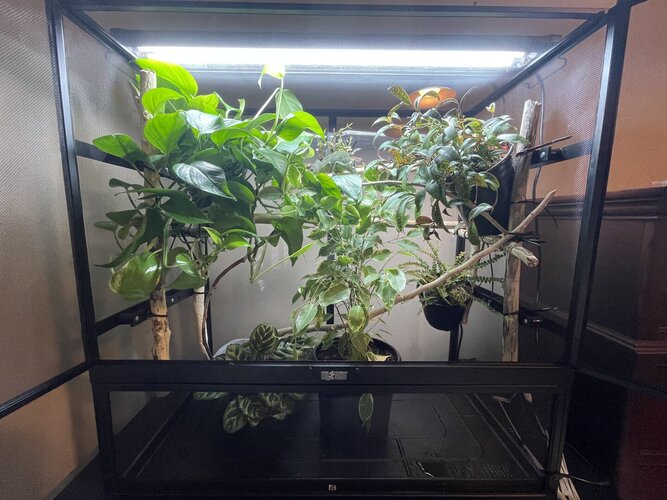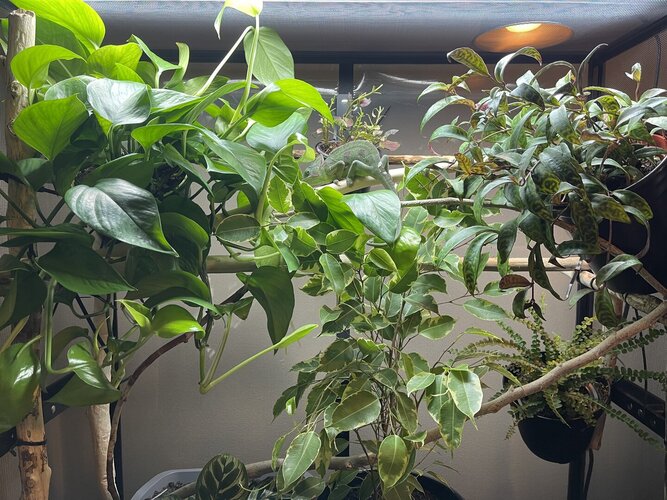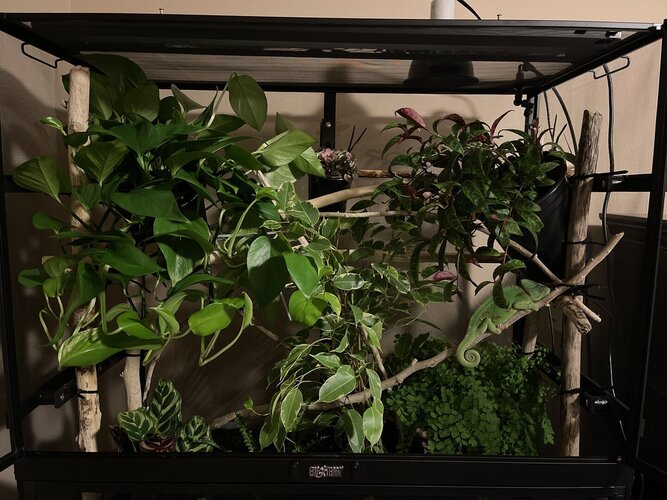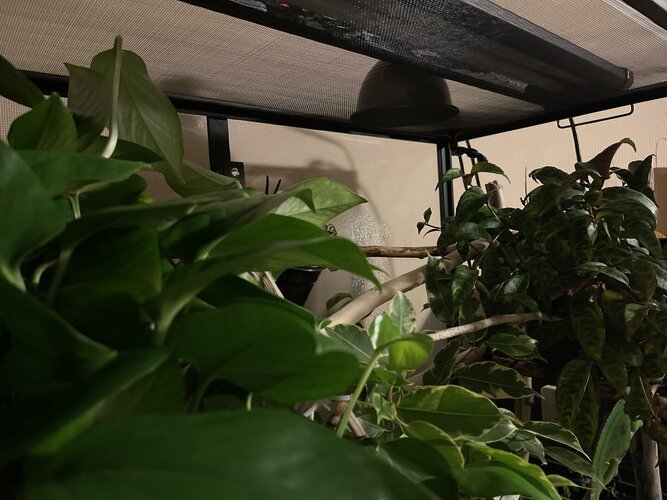PistachioG
Member
Chameleon Info:
Cage Info:
Things I plan to add by the end of the week:
Current Question - please review her new enclosure and let me know if anything is missing. I just placed her in there this morning.
- Your Chameleon - veiled, female, 3 years old. I’ve had her for 3 weeks.
- Handling - several times a week if she’s in the mood for it.
- Feeding and supplements - 7-10 crickets or BSFL (soon to add silk worms to the mix) every other day gut loaded with carrots or other approved veggies and dusted with EarthPro A and Repashy calcium no D every feeding and Calcium low D twice a month. Hornworms or wax worms one twice a week.
- Watering - MistKing 2 min at 7pm, 8pm, 9pm, 1:00 am, 2:00am, 3:00am, 5:00am, 6:30 am.
- Fecal Description - Every other day, looks healthy and formed with urate. Has this chameleon ever been tested for parasites? No
- History - Original owner had her since a few months old. No mention of any health or feeding issues. Never laid eggs but also didn’t have a lay box consistently.
Cage Info:
- Cage Type - Screen with back side covered, 36x18x36
- Lighting - Arcadia T5 6% linear + daylight bulb . On from 7am until 7pm.
- Temperature - Basking upper =85, lower =80 Low overnight = 69. I use a therm pro with a waterproof sensor plus temp gun and hand under basking just to triple check.
- Humidity - 48-50% during the day, 60-80% at night. See watering for more info. I use a thermpro waterproof that can stay in the enclosure 100%.
- Plants - Lipstick, pink polka dot, weeping ficus, prayer, fern, pothos
- Placement - Where is your cage located? Bedroom. Is it near any fans, air vents, or high traffic areas? None of these. At what height is the top of the cage relative to your room floor? 6.5-7ft
- Location - Where are you geographically located? Washington state, USA
Things I plan to add by the end of the week:
- Drain in bottom of substrate pan
- A new polka dot plant (she ate almost the whole thing)
Current Question - please review her new enclosure and let me know if anything is missing. I just placed her in there this morning.








